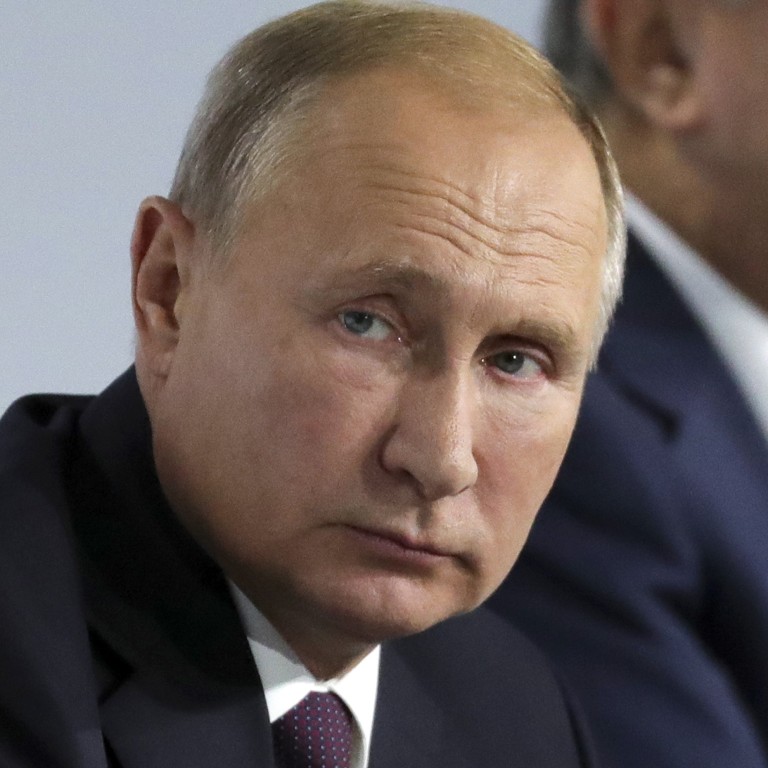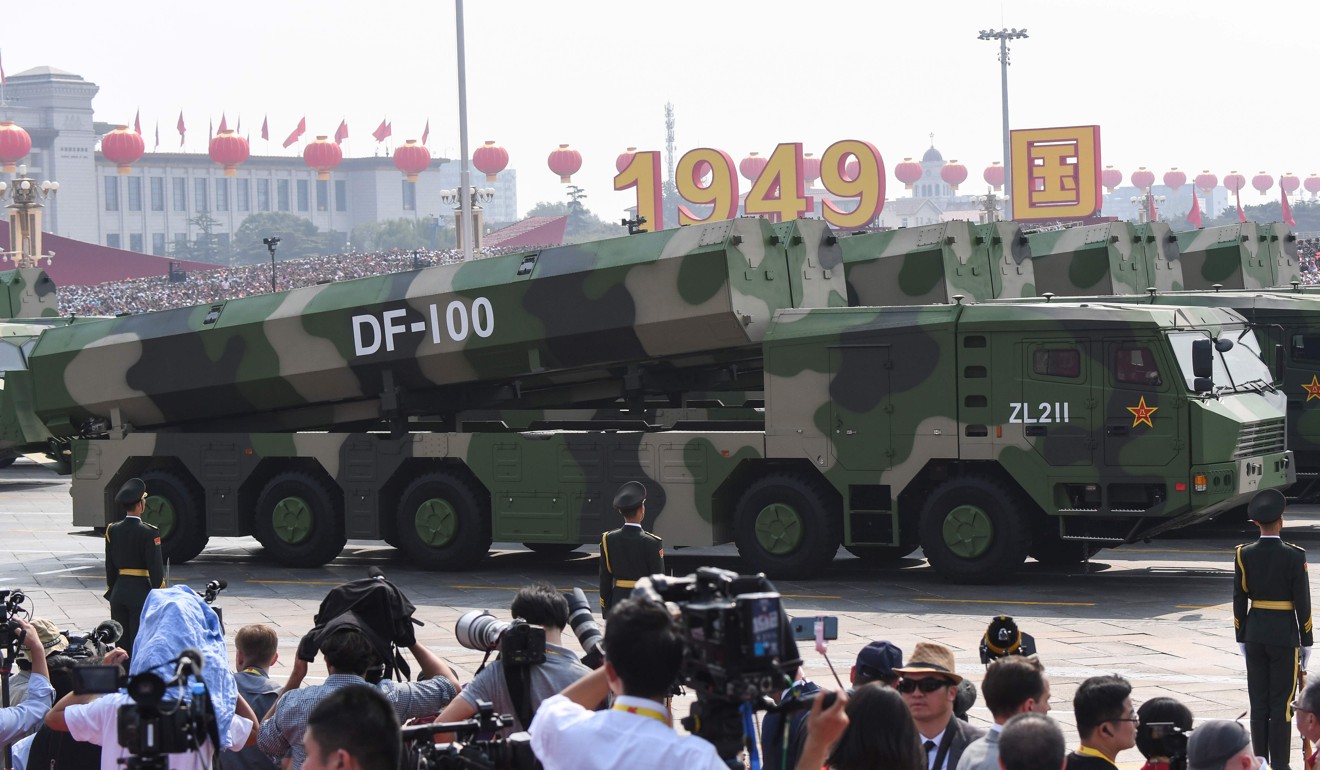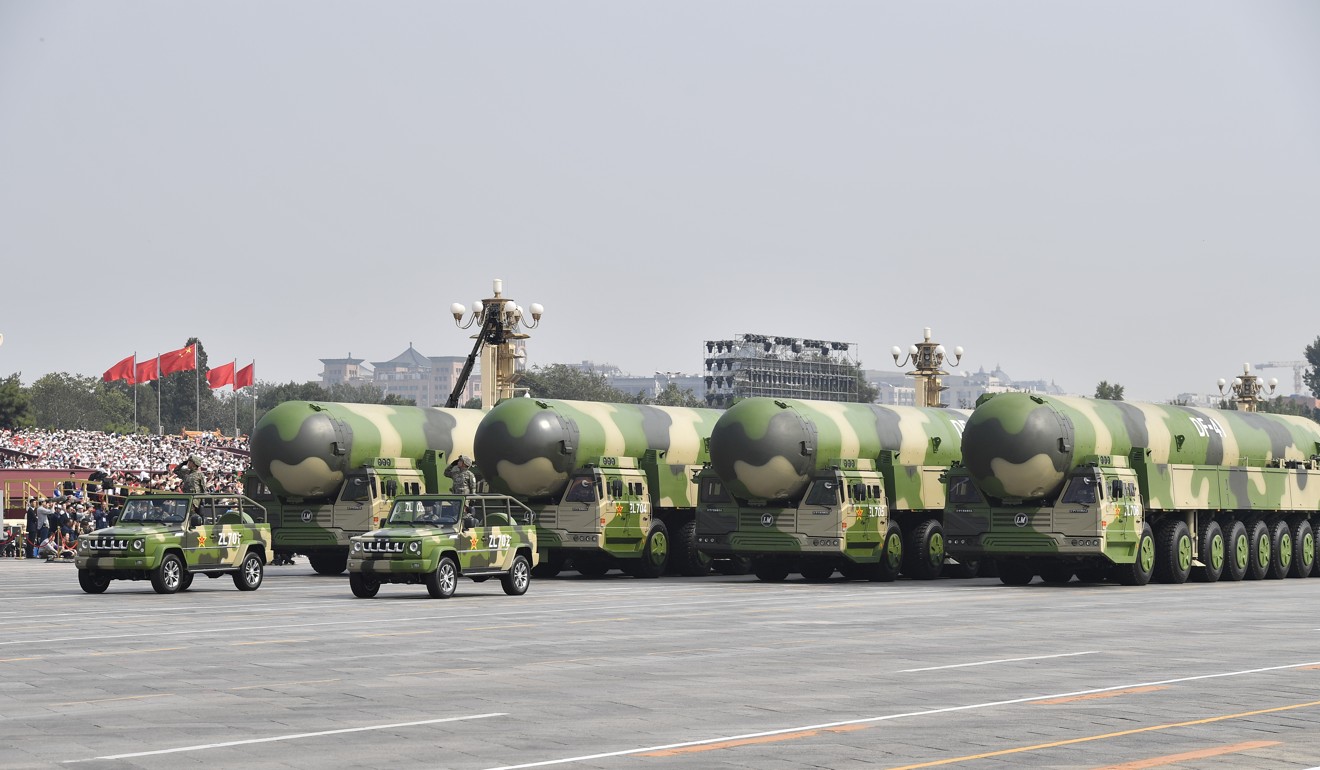
How China is relying on Russia to achieve ‘strategic stability’ with the US
- Mathieu Duchâtel writes that a shared ambition to change the international order and a concern for the nuclear balance of power with the US are helping China get what it needs from Russia
Could Russia undermine its own nuclear superiority vis-à-vis China to help strengthen the Chinese nuclear deterrent against the United States?
This is exactly what Russian President Vladimir Putin implied at the Valdai discussion club last week, when he declared:
“I am probably not revealing a big secret here, but it will transpire sooner or later anyway: we are now helping our Chinese partners create a missile attack warning system. This is very important and will drastically increase China’s defence capability. Only the United States and Russia have such a system now.”
Early-warning missile attack systems rely on long-range ground-based radars and space-based assets to detect missile launches and predict their trajectory. They can support missile defence, but remain a passive system without offensive capabilities.
Strategic stability, a cold war arms control concept, is at the centre of China’s world view
Some Russian analysts have suggested that the support provided to China could centre on radars rather than space, and possibly include the sophisticated control systems that prevent radars from being jammed or taken control of by external forces.
Putin’s declarations suggest that more information will be made available regarding the exact nature of the support provided by Russia to a Chinese project that is not well understood.
But what Putin’s revelations point to is the deep-rooted concern in the Chinese leadership regarding the reliability of China’s nuclear deterrent.
In his book, Tides of Change, Carnegie-Tsinghua scholar Tong Zhao recalls a Chinese estimate that only 5 per cent to 10 per cent of China’s deterrence force could survive a disarming first strike by the US.
The real estimate is certainly not for the public domain, but it is fair to assume that a sense of vulnerability prevails in Beijing.
Each component of China’s deterrence triad – ground-based missiles, strategic missiles and ballistic submarines – is being modernised to overcome its vulnerabilities in face of America’s overwhelming superiority in intelligence, surveillance and reconnaissance.
Some of the equipment displayed last week in Beijing at the PRC’s 70th anniversary military parade – the hypersonic glide vehicle and the road-mobile solid fuel ballistic missiles that reduce reliance on silos, for instance – is being developed to reach a capacity of assured retaliation.
Russia helping China to build missile warning system, says Putin
This objective inferiority is a powerful engine driving China’s interest in deepening relations with Russia. China shares the Russian obsession for “global strategic stability”.
To use language from a recent joint statement issued in June 2019, the two partners seek to counter “the pursuit of a strategic advantage in the military sphere, in the intention to ensure absolute security and in order to gain unlimited opportunities for military-political pressure on opponents of such states”.

Their number one concern is the development and the deployment of missile defence by the US. But there are other considerations. For example, what if the new START Treaty between the US and Russia is not prolonged or replaced after it expires in 2021?
The US (and Russia) would be unconstrained to deploy nuclear-armed weapons beyond the current limit of 1,550 warheads, possibly adding to China’s sense of inferiority and increasing the risk of arms race instability.
China’s show of strength suggests ‘nuclear triad’ is complete
By reducing the intelligence gap between China and the US, an early warning system would strengthen China’s confidence in the reliability of its nuclear deterrent. And it would create new strategic options.
Without giving up its no-first use doctrine, China could move to a posture of launch under attack. Instead of promising retaliation after absorbing a first strike, China would signal the capacity and the intention to strike immediately the moment an attack is detected.

Seen from Beijing, the imperative is clear: eliminate from the US playbook the option of a disarming first-strike taking out the whole Chinese nuclear arsenal. Is this China’s understanding of a situation of “strategic stability”? It is not entirely clear.
China’s language is defensive. The priority is to deny the US the opportunity to take advantage of its domination of the escalation ladder to dictate outcomes during crises.
‘We can’t stand idly by’: Putin vows reciprocal response to US missile test
But this is precisely where China’s defensive language intersects with more offensive considerations.
Without “strategic stability”, Chinese options are constrained in the Taiwan Strait and in conflicts that could bring a confrontation with the US. Reaching parity would increase dramatically China’s capacity to adopt more offensive policies.

Fifty years have passed since the Soviet Union seriously considered launching nuclear strikes against Chinese nuclear facilities in Xinjiang. Vladimir Putin now describes the China-Russia relationship as “an allied relationship in the full sense of a multifaceted strategic partnership”.
That all three Sino-Russian alliance treaties (signed in 1896, 1945 and 1950) ended with a Russian betrayal is an invitation to caution from a Chinese perspective. Indeed, China seems less interested in a formal alliance than in concrete support for some of its priorities: military programmes, access to energy, the ideological contest against liberal values …
Xi to visit Russia as two sides move closer in face of US mistrust
Such common interests outweigh the baggage of history. “Strategic stability”, a cold war arms control concept, is at the centre of China’s world view. Russia is willing to strengthen China in its competition with the US. This comes at a high cost: the acceleration of Russia’s own widening power gap with China.
Ideological convergence, a shared ambition to change the international order and a genuine concern for the future nuclear balance of power with the US are helping China to get what it needs from Russia.
Mathieu Duchâtel is director of the Asia programme at Institut Montaigne
